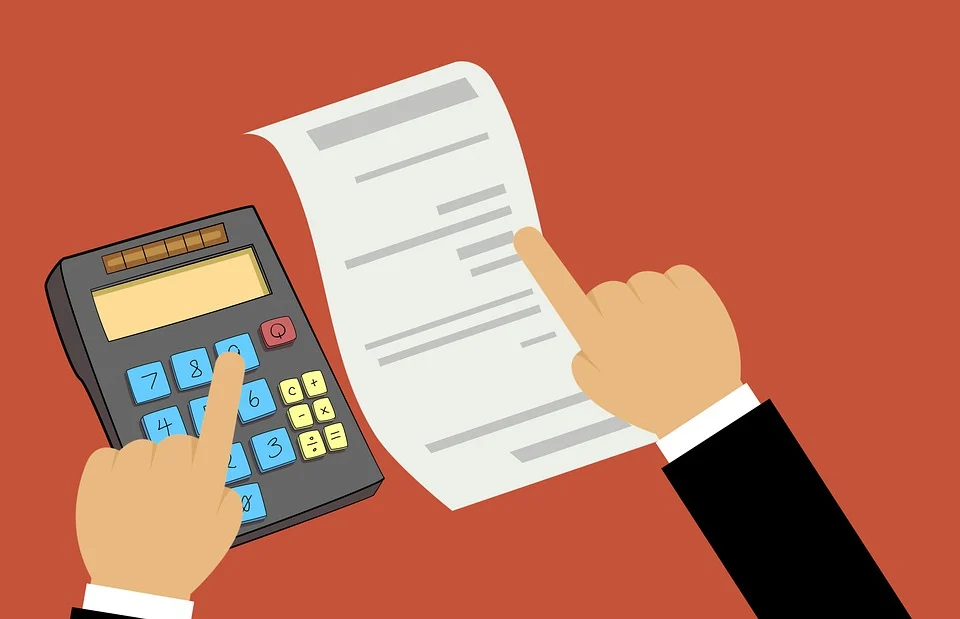The New Year kicks off with some glad tidings for millions of employed taxpayers in the form of a cut to National Insurance. However, this comes as income tax thresholds and capital gains and dividend allowances continue to fall in either nominal or real terms, which is driving up the overall tax burden.
With an early spring Budget now set for 6 March and most probably an election on the horizon later in 2024, official estimates are upgrading the effects of fiscal drag, which is pulling more people into paying tax and increasing liabilities for those already paying tax.
Sian Steele, Head of Tax at leading UK professional services and wealth management firm Evelyn Partners, says:
‘The 2p cut to National Insurance for employees will be the first notable tax event of 2024, as the change kicks in for PAYE on Saturday 6 January. But many self-assessment taxpayers will be focused on the 2022/23 tax year to complete their online tax return by the deadline looming on 31 January.
‘Politicians, economists and policymakers will have the crucial spring Budget on their radar as the Chancellor gears up for what could be the last fiscal event before the next General Election.
‘Hardly will the dust have settled on that before the tax year ends and new tax rules apply from 6 April. It’s a crucial time for many tax professionals and their clients as we try to utilise allowances, arrange transactions and square off tax affairs efficiently before the end of the tax year.
‘Tax will also become an issue for more pensioners with modest private incomes as the rising state pension takes up more and more of the £12,570 personal income tax allowance, and for more savers who are being caught out as higher interest payments threaten to breach the personal savings allowance.
‘Then there is the small matter of a General Election, which strictly speaking does not have to be held until January 2025 but seems more likely to be held in 2024. We can hope for some clarity on tax policy in the campaigns but the likelihood is that manifesto promises will remain light on detail, emphasising the tightness of the public finances and the need to stick by fiscal rules.
‘By the end of the year, however, we might have a new Government with fresh intentions for tax rates and rules that could affect everyone in the country.’
6 January: 2p cut to National Insurance
The main rate of class 1 NI will be cut from 12% to 10%. An average worker earning £35,400 will get a tax cut of more than £450 in 2024-25, while an employee earning £50,000 will pay £3,743 in national insurance after the change, saving about £749.
Sian Steele says: ‘The NI cut will bring a bit of New Year cheer for millions at a time when there are many pressures on household incomes. But taxpayers should put it in the context of a steady rise in the overall direct tax burden that has been driven by frozen income tax and other tax thresholds and allowances that have fallen in at least real and in some cases nominal terms since 2021/22, and will continue to erode take-home pay and disposable incomes until 2028.
‘New estimates from the OBR at the Autumn Statement raised the bar again for how widespread the fiscal drag effect will be and how much revenue it will raise for the Treasury. Between 2022-23 and 2028-29, threshold freezes will take 4million additional individuals into paying income tax at the basic rate who didn’t previously, 3million more into the higher rate band of 40 per cent, and 400,000 more onto the additional 45 per cent rate.[1]
‘This represents quite significant increases in the number of taxpayers in each band of income tax: 11 per cent for the basic rate band, 68 per cent for the higher rate and 49 per cent for the additional rate. Relative to raising thresholds by CPI, the OBR now estimates this set of freezes will raise nearly £43billion by 2027-28 – that is £13.6billion higher than their own March forecast.
‘The OBR itself states that “The reduction in the employee rate of NICs in this Autumn Statement will reduce the impact of the primary threshold freeze by only around £180 million [over the whole period to 2028]”.’
31 January: Tax return deadline
Unpaid tax must also be settled by this date, and the self-employed must make their first payment on account.
>> See our self-assessment checklist and tax return tips for 2024 here
Ms Steele warns that self-assessment taxpayers should be wary of confusion over HM Revenue and Customs announcements in 2023 regarding self-assessment.
HMRC raised the earnings threshold at which workers are required to file a tax return from £100,000 to £150,000 – for this tax year running to 5 April 2024. Those earning between £100,000 and £150,000 will still have to complete their tax return for 2022/23 which is due for online filing by the end of January 2024.
The £100,000 threshold for SA coincided with the point at which the personal allowance starts to taper, which could open the door to some uncertainty. The £12,570 personal allowance is reduced at a rate of £1 for every £2 of income earned in the £100,000 to £125,140 band.
Steele says: ‘Those approaching or just over the £100,000 income threshold should be aware of potential complexities when considering income tax liabilities. Income from savings interest and dividends, for instance, might not be liable to tax itself if it falls within allowances but will count towards adjusted net income and therefore could take someone into the personal allowance taper.’
In his Autumn Statement the Chancellor further announced that even the £150,000 rule will be abolished from 2024-25. Then as now, those uncertain as to whether they really need to complete a SA tax return should always do so if they have been issued with an HMRC notice to complete one, or if they think they meet any of the other SA criteria.[2]
There is an online HMRC tool that you can use to check whether or not you need to submit a self-assessment return.
6 March: Spring Budget – IHT and / or income tax cuts?
Ms Steele says: ‘Whether or not it is a precursor to a May election, this promises to be an exciting event as the Chancellor has a last swing of the tax bat to try and inspire a jaded electorate in what could be a last bid to save the Conservative government. Hunt said after his Autumn Statement that he hoped to be able to “reduce the tax burden still further in the future”, and as soon as the Budget date was announced the rumour mill swung into action with predictions that inheritance tax or income tax will be cut.
‘Recent analysis indicates that Mr Hunt could have some extra funds to play with, with economists suggesting that falling yields on gilts could boost the Chancellor’s fiscal headroom by more than £20billion compared to the outlook at the Autumn Statement.[3]
‘In his 2022 leadership campaign Rishi Sunak promised to reduce the basic rate of income tax, so such a move from Hunt cannot be ruled out. But the fairer income tax cutting move would be to break the threshold freeze and raise the personal income tax allowance or the threshold for the higher rate band – even if the freeze was then reintroduced for subsequent years as planned until 2027/28.
‘The personal tax allowance was £12,500 in April 2019: if it had been raised in line with the consumer prices index it would have been set at around £15,150 last April and if we assume inflation of 6% for this financial year would be about £16,000 by next April. Likewise, the higher rate tax threshold which was £50,000 in April 2019 – and is drawing huge numbers of people into paying 40% tax – would have been raised to about £60,600 by this April and by next April would be well over £64,000.
‘A move to reduce inheritance tax is now thought likely at the spring Budget, having failed to materialise at the Autumn Statement. Speculation again is that the 40% will be halved, but families with more modest estates that are being drawn into the IHT net would probably rather see the nil-rate band raised. The £325,000 allowance has been frozen since April 2009 and would now stand at £489,700 had it risen with inflation.
‘The out-turn and forecasts for the public finances between now and March will be watched hawk-like by policymakers and media alike for signs that the Chancellor might have scope for a pre-election “giveaway”. But also much will depend on the course of inflation: if the headline rate continues to fall as fast as recent data has indicated, then Mr Hunt will have more leeway to cut taxes, as he has emphasised the need to avoid re-igniting inflation with a fiscal injection.’
5 April: End of the 2023/24 tax year
Ms Steele says: ‘This is the deadline at which everyone loses their one-off annual allowances before receiving new ones for the new tax year. Accountants and tax advisers will be busy from the new year trying to make sure clients have structured their finances and assets in a way that optimises their tax exemptions and allowances – and those who handle their own tax affairs can do the same.
‘Savers will lose any unused part of their £20,000 ISA allowance, so might consider funding an account with cash to secure their 2023/24 entitlement, even if it is not immediately invested. Likewise savers can look to use up the annual pension allowance, which was raised from £40,000 to £60,000 for this tax year, with some last-minute one-off contributions – but unlike with ISAs there is the option in subsequent years to use up unused pension allowances from previous years using “carry forward”.’
‘The capital gains tax allowance more than halved last April from £12,300 to £6,000, and those with investments outside tax-protected wrappers might consider crystallising unrealised gains, or unrealised losses to offset gains, in order to use up their 2023/24 exemption. Assets can also be transferred between spouses free of tax, which can help to use up both spouses’ annual exemptions and any capital losses. As the CGT annual exempt amount halves again for 2024/25 to £3,000, the last few months of this tax year might be an important time for some investors to accelerate gains.
‘The dividend allowance is also shrinking fast, having fallen from £2,000 in 2022/23 to £1,000 in this tax year, before halving again to £500 in the next. Private company owners or shareholders who have a choice over the size and timing of their dividends may choose to accelerate dividends if they have not yet used their full allowance for 2023/24.
6 April: New tax year, new rates and allowances
· Self-employed workers will no longer have to pay class 2 National Insurance contributions, and the main rate on class 4 contributions will be reduced to 8%. The Chancellor said these changes would save a self-employed person with profits of £28,200 a total of £350 in 2024/25. Self-employed workers will still qualify for the benefits linked to class 2 contributions.
· The capital gains exempt amount and the dividends allowance both halve to £3,000 and £500 respectively, presenting some strategic challenges for those with investments outside tax-protected wrappers, including those who will quickly max out annual pension and ISA contribution limits. Ms Steele says: ‘It might be for instance that ISAs are used to shelter income-generating investments, given the very limited dividend allowance, rather than those held for capital gains. Savers are well advised to make good use of pension, savings interest, and ISA allowances as other options are limited.’
· The state pension payout rises by 8.5%. The full new state pension will rise to £221.20 per week in April 2024, from £203.85. This adds up to £11,502 per year, compared to the current £10,600. Meanwhile, the full basic state pension will rise to £169.50 per week, from £156.20. Ms Steele, ‘This will obviously be welcomed by most pensioners but those with private sources of income might check whether this state pension increase brings them into the basic rate of tax, or nudges them into a higher tax bracket, and if so whether or not there is anything they can do to mitigate that.’
· The abolition of the pension lifetime allowance becomes law. Ms Steele says: ‘Excess lifetime allowance tax charges on pots above £1,073,100 have already been withdrawn but as the Finance Bill hits the statute books, a line is drawn under the abolition of the LTA, which will mean many savers feel more confident building up their pension pots above the old limit. However, given soundings from Labour, a change of Government could see this measure reversed.’
5 October: Self-assessment registration deadline
For anyone who has newly become self-employed or started to earn extra money outside of PAYE that breaches – or is close to breaching – tax-exempt allowances, such as from renting out a property or having made profits selling assets. See note [2] below.
31 October: Postal self-assessment deadline
For the half-million people who submit hard copy tax returns.
NOTES
[1] OBR: Economic and fiscal outlook – 22 November 2023
[2] You must complete an SA tax return if you:
· are self-employed with an income above £1,000
· are a partner in a partnership
· are receiving income from savings and investments of £10,000 or more before tax
· claim employment expenses of more than £2,500
· are receiving income from a trust or estate
· have a capital gains tax liability after allowing for the CGT annual exemption. CGT on UK or overseas residential property where the sale gives rise to a gain in excess of your annual exemption now needs to be reported separately to HMRC within 60 days of completion
· You are liable to the High Income Child Benefit Charge – although the Government has said it will start to claw back child benefit payments via tax codes from next April
[3] Capital Economics, 11 December
















